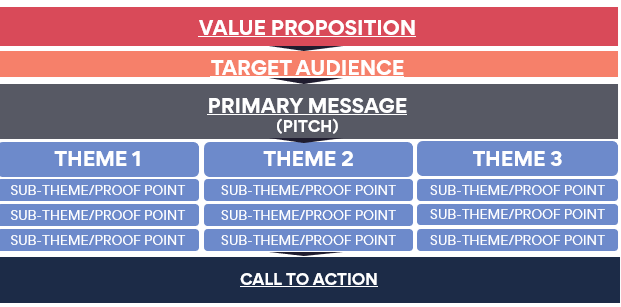Common definitions frame a value proposition as the statement that captures the essence of what makes a company, product or service relevant to current or would-be clientele. Or a succinct answer to the question that’s on the mind of every prospective investor or buyer, but usually not directly articulated - if I give you my money, what’s in it for me?
Healthcare companies would seem to have an easier time coming up with good answers to this question than most, particularly in our pandemic-stricken times. After all, just about everyone places a high value on health, and won’t require much convincing of the relevance of a product or solution that promises to enhance or preserve it.
Yet in our view these definitions are also touch superficial, and tend to provoke a knee-jerk response. Most organisations are (rightly) confident that they have a pretty clear idea about what they bring to the table, and how to express that. And so after some quick internal deliberations they go a few steps beyond the company’s slogan to come up with a definitive statement on their corporate character, or world-beating capabilities. We innovate in our sleep. We advance new therapeutic frontiers. Value proposition job done. There’s nothing inherently wrong with this, but it essentially limits the value proposition to a self-contained marketing exercise, suitable for propping up a website or providing a ready-made answer to employees who wonder just what it is they’re all doing around here, anyway.
That’s a shame, because done right, a value proposition is capable of so much more. Far from being an empty catchphrase, a value proposition with real, well … value, can serve as the foundation for an editorial campaign with long-lasting impact. That requires developing a proposition distinctive and intellectually credible enough to strike a chord with a time-starved and information-saturated audience, and that touches on big ideas that lend themselves to repeated exploration as you publish and communicate over time. A tall order, but as many of our projects have illustrated, certainly not impossible. Here are a few tips on where to start.
*It’s not all about you. A value proposition naturally has to say something about the organisation, but given the purpose is to communicate and build connections, must also make it clear what the organisation brings to the table for everyone else. As McKinsey recently pointed out in research emphasising the importance of defining a value proposition for digital health, that means the focus should be less on what the enterprise ‘does,’ or excels at; more on the problems or issues it allows others to overcome, or the contributions it makes to a bigger picture.
Put another way, rather than what an enterprise ‘has’ - even if their talent, technology or research pipeline is worth boasting about - a solid value proposition explains what the company creates, and at least hints at some kind of higher purpose. Pointing out you’re contributing to more equitable health outcomes for remote communities, for example, is a message that will travel a lot farther, and to a lot more people, than insisting you’ve got the best interface for virtual consultations.
*Cast a wide net - and then focus. Creating a value proposition that connects with external audiences and a wider cause is tough to pull off if you’re only consulting stakeholders or conducting brainstorming sessions in-house. Seeing the big picture means almost inevitably looking outside the organisation, to consider the changes sweeping the industry and society; the issues that are emerging as a priority for populations, health systems and regulators; and how competitors and peers frame their arguments in response.
Given the amount of background noise in any market this is best tackled through a structured research process that includes systematic analysis of the content coming from leading voices and peers in the field, and in-depth consultations with both internal and external authorities to zero in on the themes or concerns that emerge as common and consistent. This allows the enterprise to determine where it is best positioned to speak to those concerns - and to develop a value proposition that does so in a direct, and distinct, way. Given the at times disparate or even competing priorities of practitioners, patients and health authorities, in the healthcare industry in particular there’s often a strong argument for crafting different value propositions to underpin campaigns designed to engage these different groups.
*See the proposition as a starting point. Consider a value proposition the opening shot in a protracted battle - or if you prefer a warmer, fuzzier image, the shelter under which everything to follow is built. If you’ve done your research homework, the proposition will touch on a broad issue that can be broken down into any number of sub-themes or topics - each of which could be seen as an opportunity for further discussion or publication on the organisation’s associated views or capabilities.
A value proposition based on the company’s advances in remote telemetry, for example, could give rise to content on everything from its commitment to data security and privacy, to the prospective role of artificial intelligence in advancing care. One built around emerging therapies could lead to an in-depth report on reducing risks in clinical trials, or a webinar on ways to tackle viral vector supply constraints.

Map those out systematically - a basic structure that we’ve employed in our consultations is above - and you’ve got the basis for a full-scale content campaign that’s united on a powerful core concept, yet still capable of supporting dialogue with target audience groups. With a bit of work, a value proposition can move well beyond the realm of jargon, or serving as an internal creed, to actually deliver what the label promises.
World-class content strategy and execution
Contact us to get started